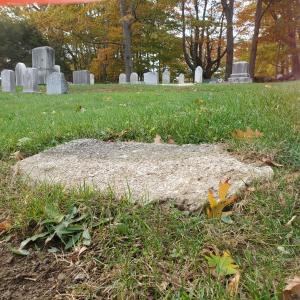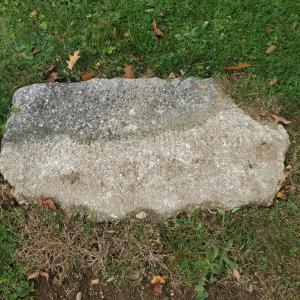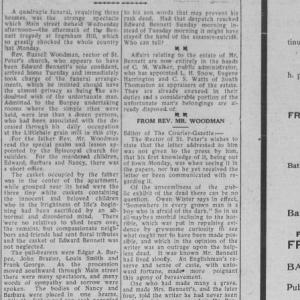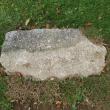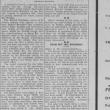The beyond-the-grave discovery of a 1900s triple murder/suicide
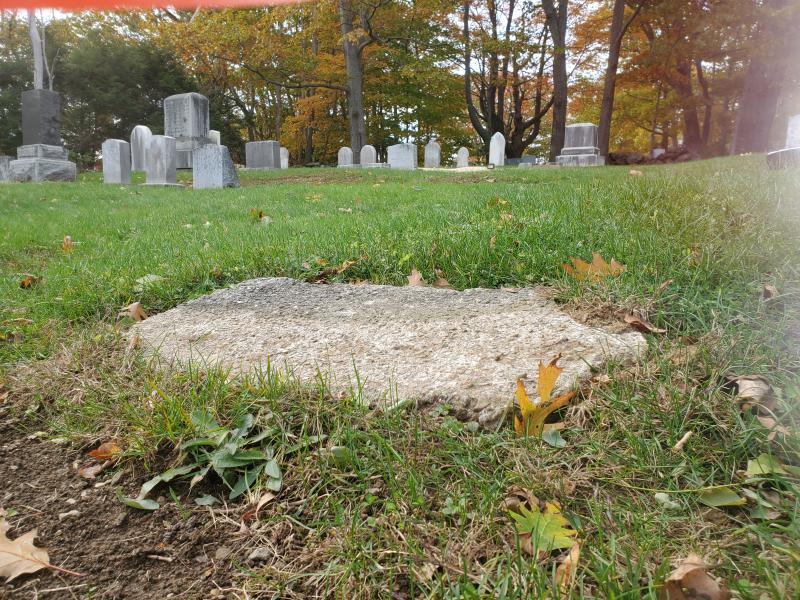 Walter Guptill pondered over this old concrete foundation for the Bennett stone that remains on the Bennett family lot. According to records, the gravestone read: “E. Bennett and Family.” There was no other information on the stone. (Photo by Walter Guptill)
Walter Guptill pondered over this old concrete foundation for the Bennett stone that remains on the Bennett family lot. According to records, the gravestone read: “E. Bennett and Family.” There was no other information on the stone. (Photo by Walter Guptill)
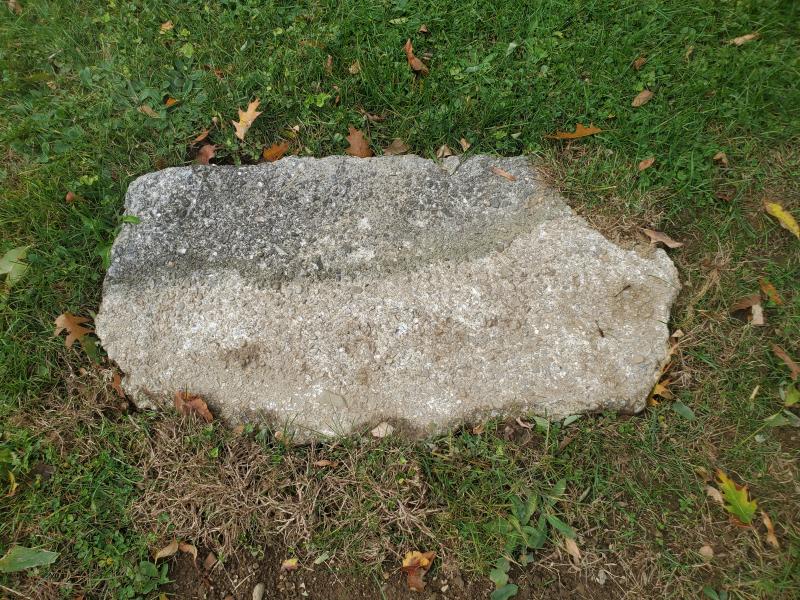 (Photo by Walter Guptill)
(Photo by Walter Guptill)
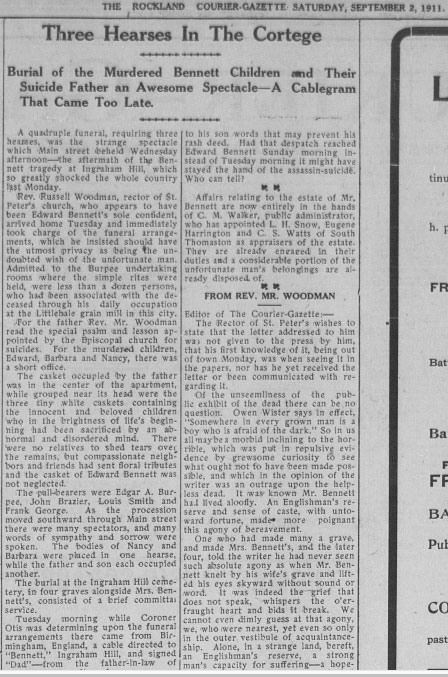 Original news story of the murders/suicide from The Courier-Gazette dated September 2, 1911.
Original news story of the murders/suicide from The Courier-Gazette dated September 2, 1911.
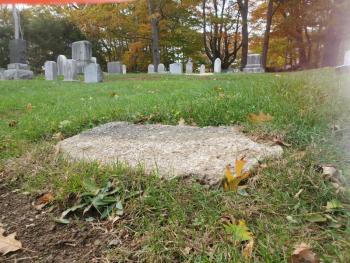 Walter Guptill pondered over this old concrete foundation for the Bennett stone that remains on the Bennett family lot. According to records, the gravestone read: “E. Bennett and Family.” There was no other information on the stone. (Photo by Walter Guptill)
Walter Guptill pondered over this old concrete foundation for the Bennett stone that remains on the Bennett family lot. According to records, the gravestone read: “E. Bennett and Family.” There was no other information on the stone. (Photo by Walter Guptill)
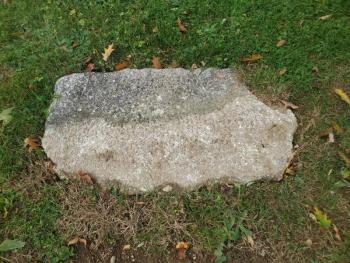 (Photo by Walter Guptill)
(Photo by Walter Guptill)
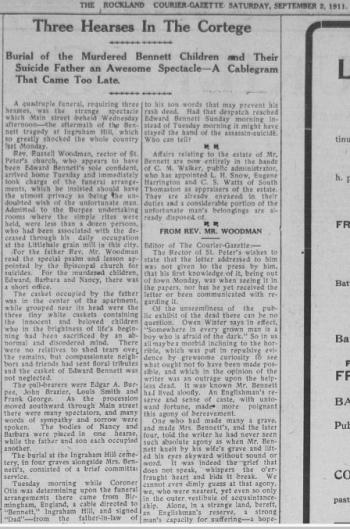 Original news story of the murders/suicide from The Courier-Gazette dated September 2, 1911.
Original news story of the murders/suicide from The Courier-Gazette dated September 2, 1911.
Walter Guptill, of South Thomaston, has always had a fascination with gravestones. A member of Maine Old Cemetery Association, Guptill volunteers to repair old gravestones that have been damaged, particularly around the Midcoast.
“When you spend a lot of time in old cemeteries, you realize there is an energy there that cannot be explained,” he said. “I walk through them often and right now the beauty of the trees changing colors around the cemeteries is something to be seen.”
Born and raised in Owls Head, Guptill cites his love of genealogy as his primary interest, which led him to restoring gravestones.
“I started doing family genealogy and that led naturally to cemeteries,” he said.
It was one unmarked grave, in particular, that led Guptill down a rabbit hole in his quest to find out to whom it belonged.
“I was walking around the MacPhail Cemetery in Owls Head and saw this cement base that was at the end of a row, but there was no stone set upon it,” he said. “Now, that’s not uncommon. Some stones are hundreds of years old and they can knock over and be buried several feet below ground.”
But, his curiosity would soon uncover something much bigger than a missing gravestone. Researching old newspaper stories and leads through Find a Grave, a worldwide database of cemetery records, he found his answer— and it was grisly.
Read the original 1911 story
Click on: Three Hearses in the Cortege
The Courier-Gazette is among several Midcoast newspapers whose archives have been digitized thanks to the Rockland Historical Society in partnership with the Maine State Library. See that story
In 1905, an English immigrant, Edward Bennett, came to America and settled in South Thomaston with his wife, Edith. Newspaper records show he was employed at Littlehale’s Grain Mill in Rockland. Edward and Edith had three children, Edward Jr, Barbara H. and Nancy.
“Through my research, I discovered Edith had died from pneumonia in August 1911 and was buried in the MacPhail Cemetery,” said Guptill.
Guptill pored through old newspaper stories from the Courier-Gazette around that date and was shocked to find this headline dated September 2, 1911: “Three Hearses In the Cortege. Burial of the Murdered Bennett Children and Their Suicide Father an Awesome Spectacle — A Cablegram That Came Too Late.”
Guptill kept finding more clues in both the death certificate of Bennett and in the certificates of the three children.
“They died by chloroform, administered by their father,” he said.
According to official records, Bennett was distraught over his wife’s passing. Despondent and alone, he murdered his children.
According to the Courier-Gazette news story, Rev. Russell Woodman, Bennett’s confidant, described Bennett’s demeanor at his wife’s service to the Courier-Gazette reporter: “He had never seen such absolute agony as when Mr. Bennett knelt by his wife’s grave and lifted his eyes skyward without sound or word. It was indeed the grief that does not speak, whispers the o’er-fraught heart and bids it break.”
Before Bennett had committed the horrible act, he left a suicide note addressed to Rev. Woodman and then walked down to the ocean and drowned himself.
“The story goes that the Reverend never saw the suicide note addressed to him,” said Guptill. “He only saw it for the first time when the Courier Gazette published portions of it.”
Guptill’s recreation of the events can be found under Edward Bennett’s listing in Findagrave.com
Even though the story had a tragic conclusion, there is still one more mystery to be solved: Where are the gravestones of Edward Bennett and his children?
“I spent a lot of time in the library and the probate court,” said Guptill. “I wanted to see if the documents included buying a gravestone, and it did. I still think there is a gravestone underneath the ground by that cement base that still needs to be discovered.”
For more stories about Maine Old Cemetery Association findings visit moca-me.org
Kay Stephens can be reached at news@penbaypilot.com
Event Date
Address
United States

